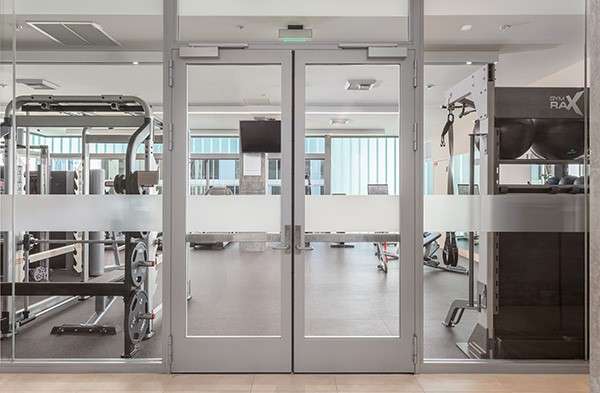Fire safety is a paramount concern in any building, and in the United Arab Emirates (UAE), where modern architecture and stringent regulations intersect, the need for effective fire protection solutions is more critical than ever. One of the key elements in ensuring fire safety is the installation of fire-rated doors. In this article, we’ll delve into the various aspects of fire rated doors in UAE, from their types and standards to the installation process and benefits.
Definition of Fire Rated Doors
Fire-rated doors are specially designed doors that can withstand the spread of fire and smoke for a specified period. These doors play a crucial role in preventing the rapid escalation of fire incidents within a building.
Importance of Fire Rated Doors in UAE
In a region like the UAE, where high-rise buildings and innovative architecture dominate the skyline, the importance of fire-rated doors cannot be overstated. These doors are integral to the overall fire safety strategy, providing a barrier that limits the impact of fire and facilitates safe evacuation.
Types of Fire Rated Doors
Wood Fire Rated Doors
Wooden fire-rated doors are a popular choice for both residential and commercial buildings. They combine aesthetics with functionality, offering a warm and inviting appearance while meeting stringent fire safety standards.
Steel Fire Rated Doors
Steel fire-rated doors are known for their durability and strength. Commonly used in industrial settings, these doors provide robust protection against fire and are often preferred for their long lifespan.
Glass Fire Rated Doors
For buildings that prioritize transparency and natural light, glass fire-rated doors are an excellent option. These doors maintain the integrity of fire-rated barriers while allowing visibility and light flow.
Standards and Regulations
1. UAE Building Codes
The UAE has stringent building codes that outline specific requirements for fire safety. Fire rated doors must meet these codes to ensure compliance and effectiveness in case of a fire emergency.
2. Testing and Certification
Before a fire-rated door is installed, it undergoes rigorous testing to determine its fire resistance capabilities. Certification from relevant authorities is a crucial factor in ensuring the door’s reliability.
Benefits of Fire Rated Doors
Fire Safety
The primary benefit of fire-rated doors is their role in preventing the rapid spread of fire. By compartmentalizing areas, these doors buy valuable time for evacuation and firefighting efforts.
Property Protection
Beyond human safety, fire-rated doors also protect property and assets within a building. They act as a barrier, preventing the fire from engulfing entire spaces.
Insurance Premiums
Installing fire-rated doors can positively impact insurance premiums. Insurance companies often offer reduced rates to buildings that invest in effective fire safety measures, including certified fire-rated doors.
Choosing the Right Fire Rated Door
Assessing Building Needs
Every building has unique requirements when it comes to fire safety. Assessing the specific needs of a structure is crucial in selecting the right type and specifications of fire-rated doors.
Maintenance Considerations
Regular maintenance is essential to ensure the continued effectiveness of fire-rated doors. Building owners should establish a maintenance routine to address any wear and tear promptly.
Aesthetics and Design
While functionality is key, the aesthetic appeal of fire-rated doors should not be overlooked. Modern designs and customizable options allow for seamless integration with the overall building design.
Installation Process
Professional Installation Importance
The installation of fire-rated doors should be carried out by professionals with expertise in fire safety measures. Proper installation ensures that the doors perform as intended in case of a fire.
Common Installation Challenges
Installing fire-rated doors may pose challenges, especially in retrofitting existing buildings. Overcoming these challenges requires careful planning and coordination with experienced professionals.
Frequently Asked Questions (FAQs)
Q. What are the key features of fire-rated doors?
Ans. Fire-rated doors are equipped with special features such as intumescent seals, smoke seals, and reinforced cores to withstand the impact of fire and smoke.
Q. How often should fire-rated doors be inspected?
Ans. Regular inspections are recommended at least twice a year to ensure that fire-rated doors are in optimal condition and meet safety standards.
Q. Can existing doors be upgraded to meet fire-rated standards?
Ans. Yes, existing doors can be upgraded with fire-rated materials and components to enhance their fire resistance capabilities.
Q. Are there specific regulations for different building types?
Ans. Yes, different types of buildings may have specific regulations regarding the installation and specifications of fire-rated doors. It’s crucial to consult local building codes.
Q. What is the average lifespan of a fire-rated door?
Ans. The lifespan of a fire-rated door depends on various factors, including material and usage. Regular maintenance can extend the door’s lifespan.
Conclusion
In conclusion, fire-rated doors in the UAE are not just a regulatory requirement; they are a vital component of a comprehensive fire safety strategy. Choosing the right type, ensuring proper installation and regular maintenance are key steps in maximizing their effectiveness. By investing in fire-rated doors, buildings in the UAE can enhance safety, protect property, and contribute to overall community resilience.

As the editor of the blog, She curate insightful content that sparks curiosity and fosters learning. With a passion for storytelling and a keen eye for detail, she strive to bring diverse perspectives and engaging narratives to readers, ensuring every piece informs, inspires, and enriches.






